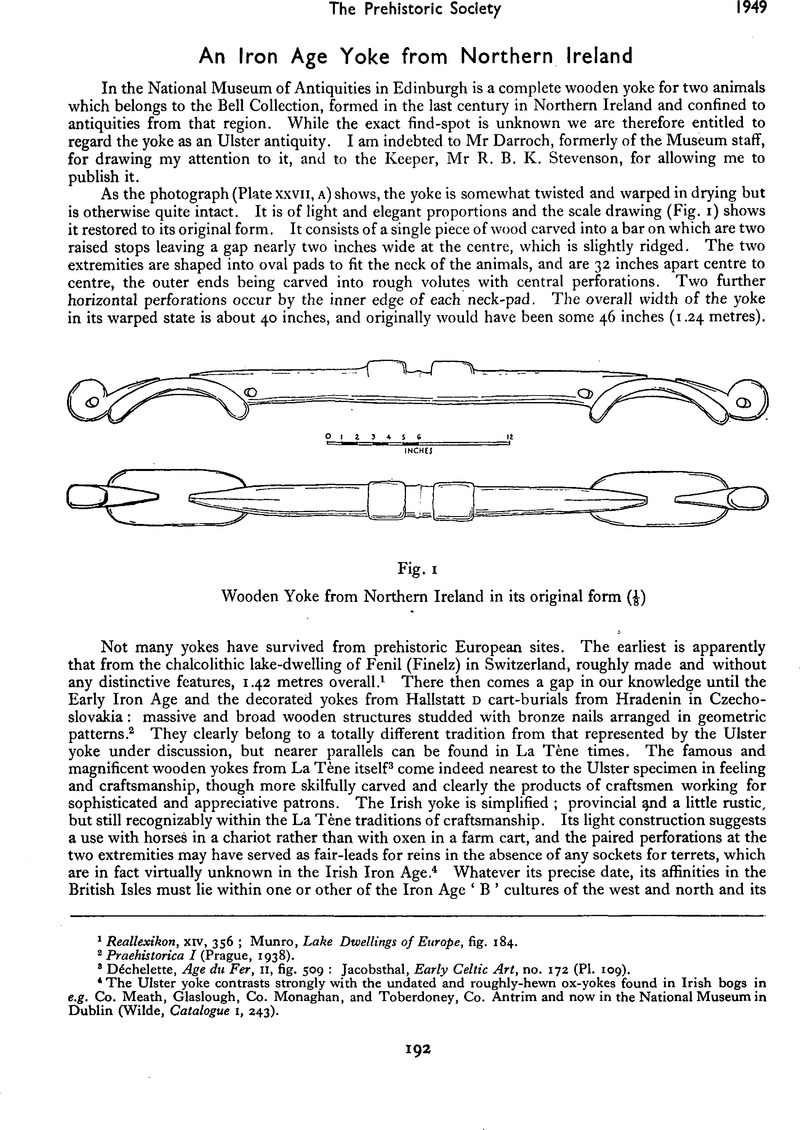Article contents
An Iron Age Yoke from Northern Ireland
Published online by Cambridge University Press: 27 May 2014
Abstract

- Type
- Notes
- Information
- Copyright
- Copyright © The Prehistoric Society 1949
References
page 192 note 1 Reallexikon, XIV, 356Google Scholar; Munro, Lake Dwellings of Europe, fig. 184.
page 192 note 2 Praehistorica I (Prague, 1938)Google Scholar.
page 192 note 3 Déchelette, , Age du Fer, IIGoogle Scholar, fig. 509: Jacobsthal, Early Celtic Art, no. 172 (Pl. 109).
page 192 note 4 The Ulster yoke contrasts strongly with the undated and roughly-hewn ox-yokes found in Irish bogs in e.g. Co. Meath, Glaslough, Co. Monaghan, and Toberdoney, Co. Antrim and now in the National Museum in Dublin (Wilde, , Catalogue I, 243)Google Scholar.
page 193 note 1 Cf. Arch. News Letter, Oct. 1948, p. 11Google Scholar; Dec. 1948, p. 10.
page 193 note 2 16e–19e Jaarverslag Veveniging voor Terpenonderzoek (1935), 6Google Scholar; Germania XX (1936), 40Google Scholar; Abb. 2, 414.
page 193 note 3 Müller, S., Mem. Soc. Ant. du Nord., 1902–1907, pp. 20–59Google Scholar Cf. Clark, J. G. D., Antiquity, XV (1941), 50CrossRefGoogle Scholar. The yokes range from 1.40 to 1.80 metres across. With the Finderup yoke were found four double wooden loops perhaps for traces.
- 1
- Cited by




